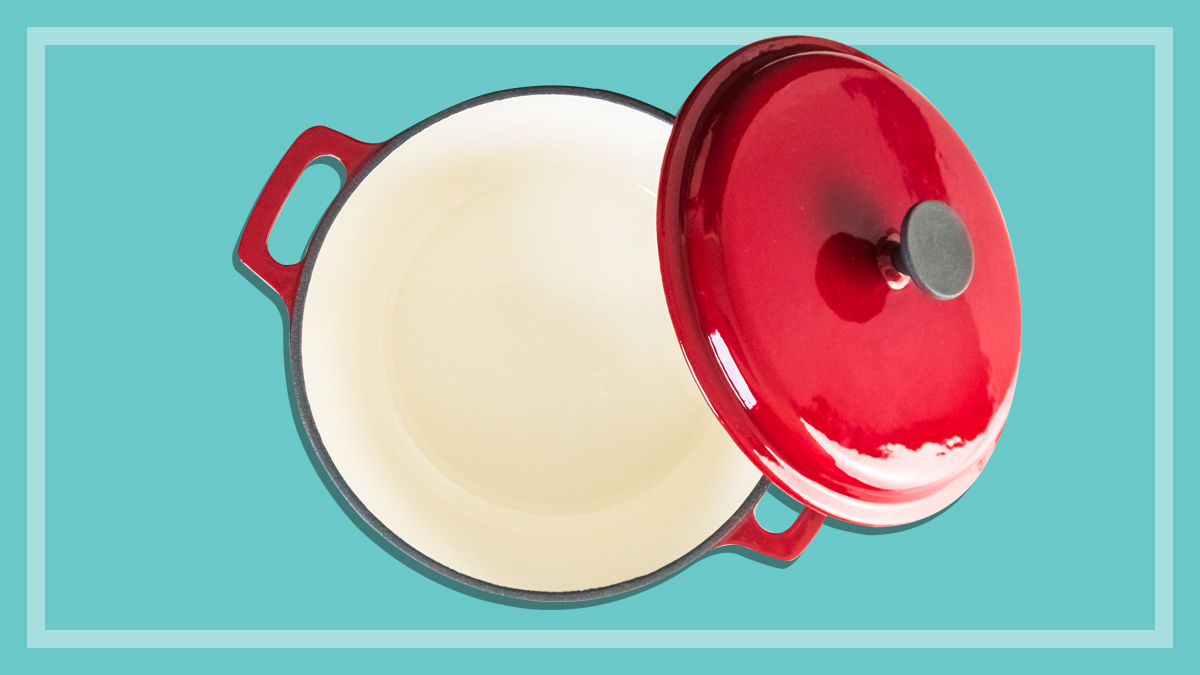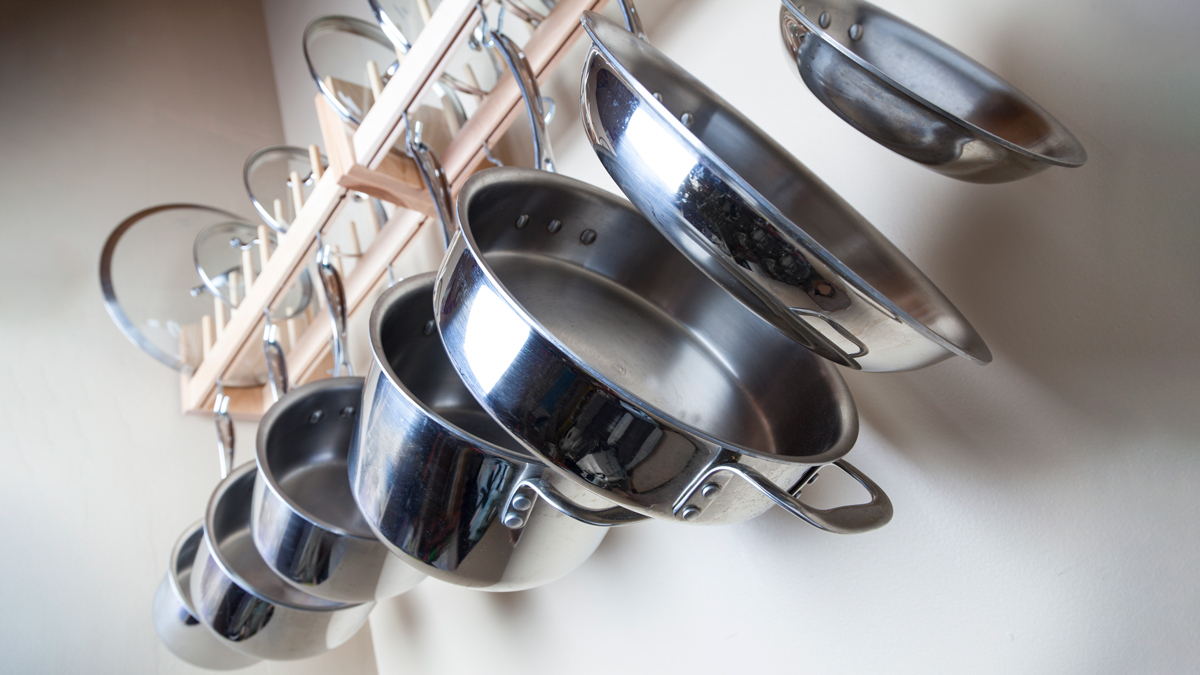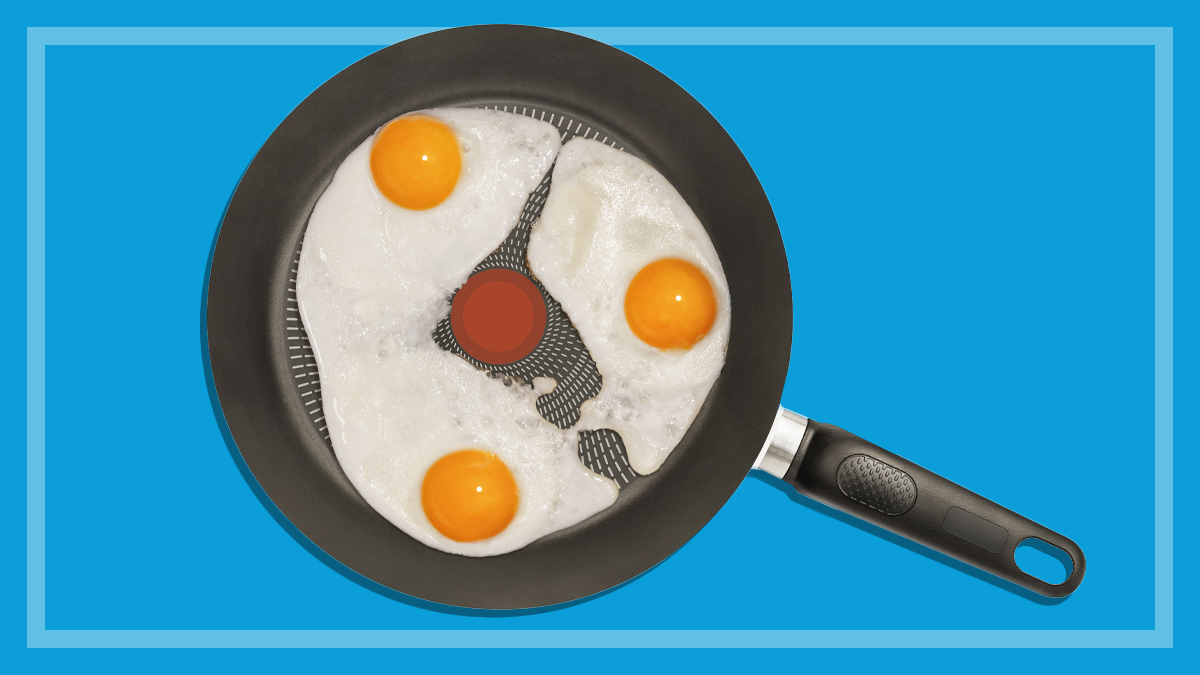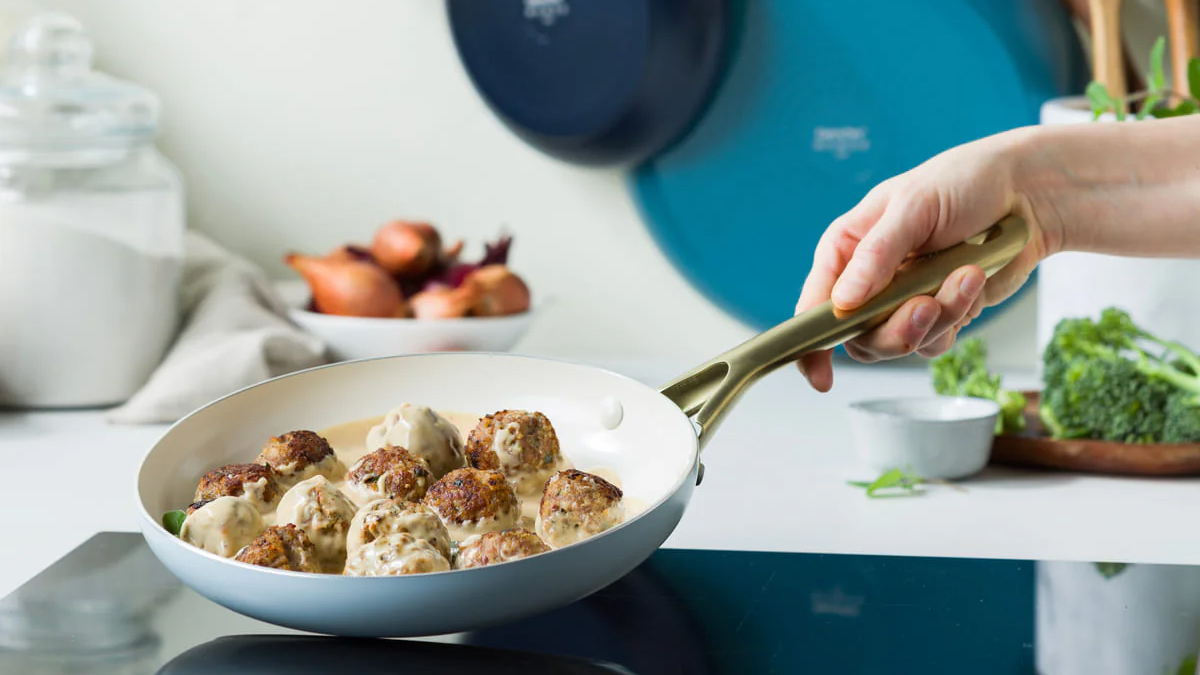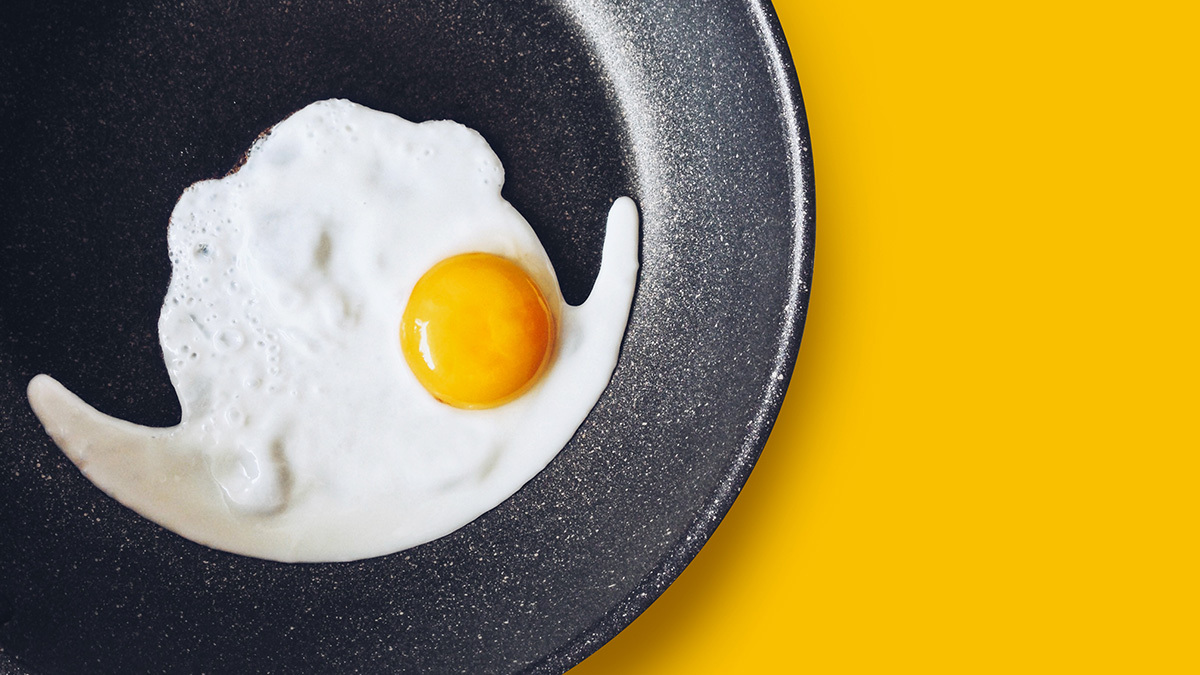Get our independent lab tests, expert reviews and honest advice.
Is the $30 Kmart Dutch oven worth buying?
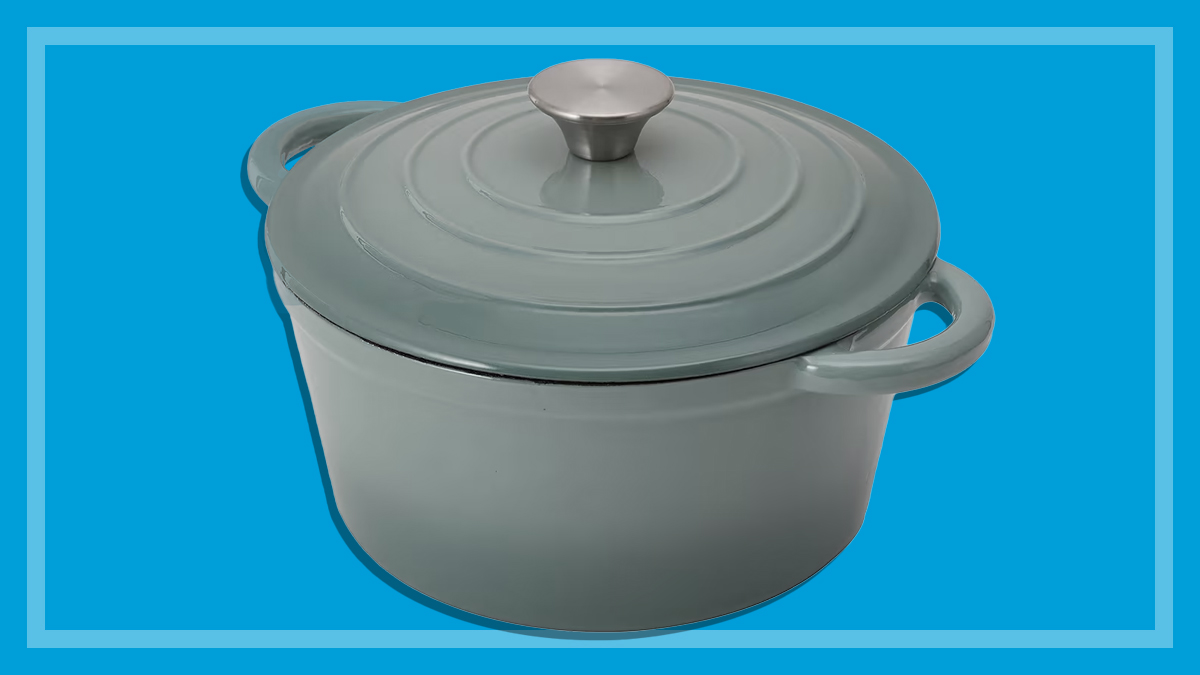
Need to know
- I put the Kmart Dutch oven to the test baking bread and slow cooking a brisket
- It did a good job at baking, searing and slow cooking and was easy to clean afterwards
- Become a CHOICE member to read our expert review of the Kmart Dutch oven and models from other brands
As a passionate sourdough baker and slow cooking enthusiast, I’ve been considering buying a Dutch oven for a while.
When the glass crock pot I had been using dropped and shattered into a million pieces, I took it as a sign that I should finally try out the $30 Kmart Dutch oven that has been tempting me ever since I read this article about cheap vs expensive Dutch ovens.
At just a fraction of the price of most other cast-iron Dutch ovens on the market, I was eager to see how it performed.
First impressions
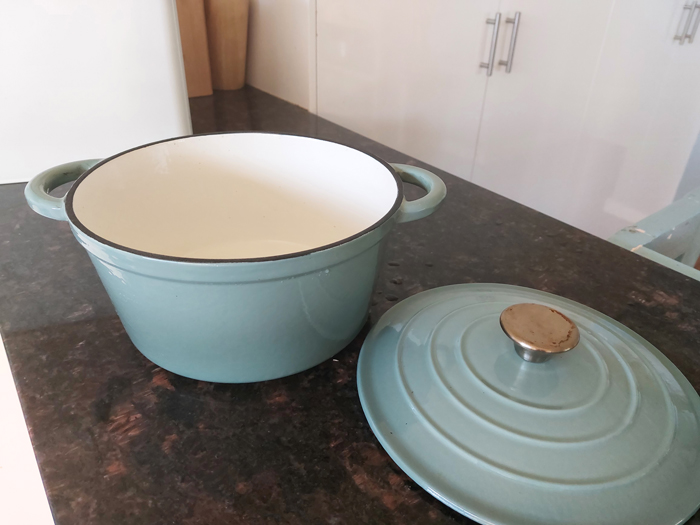
As I liberated my shiny new Dutch oven from its uninspiring Kmart-branded packaging, I was pleasantly surprised by its weight and solidity. I was subconsciously expecting it to seem noticeably flimsy or cheaply made, but it looked and felt like a high-quality item.
I chose the sage green model (currently the only other colour option is grey) and as I set it down on my benchtop, I found myself admiring how pretty it looked.
Related Kmart articles:
Should you buy an Anko vacuum cleaner?
Kmart Anko: Best buys and what to avoid
Bargain Kmart pans that beat big brands
Should you buy the Kmart twin air fryer?
Bread baking
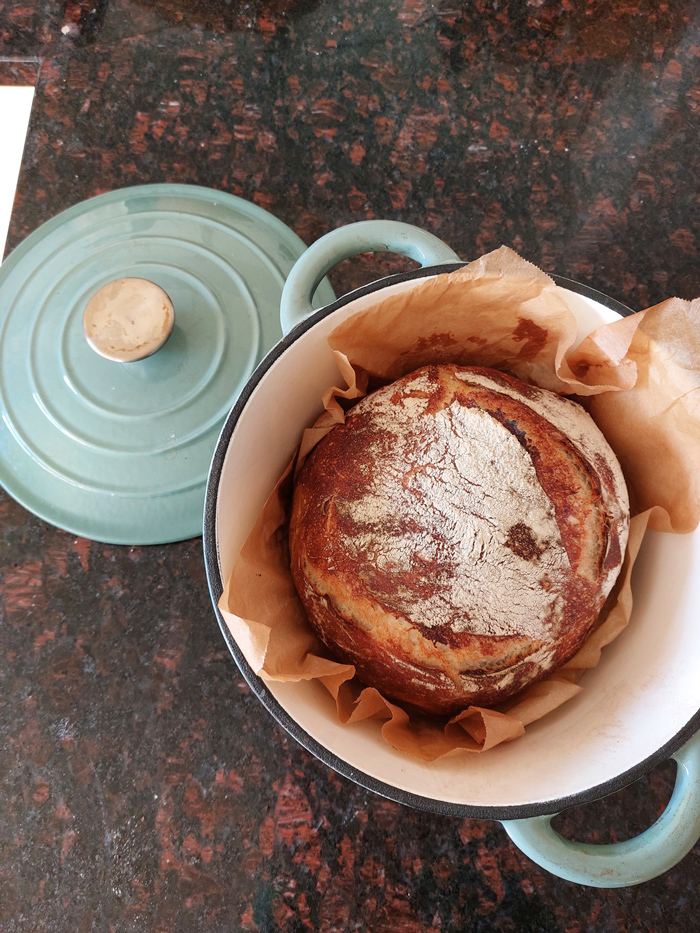
I usually bake sourdough for my bread-obsessed family a few times a week, so I needed the Kmart Dutch oven to deliver a perfect loaf right off the bat. I followed the same dough-making routine and cooking process I had been using with my glass crock pot and I couldn’t fault the results.
The loaf rose perfectly with the lid on and the crust browned evenly when I removed the lid for the last 30 minutes of baking. All in all, I’d say the loaf cooked a little quicker than usual, indicating that the cast-iron pot was a bit better at retaining heat than my glass pot.
The pot easily accomodated my 500g sourdough loaf, creating a perfect round shape with plenty of room to rise. Judging by the space left around the edges of my finished loaf, I’d say it could easily bake something a little bigger, although I haven’t tested this out.
Not only was I happy with my loaf, I also quite enjoyed how aesthetically pleasing my bread looked nestled in the pretty green pot on my benchtop.
Slow cooking
I slow-cook pretty frequently and I usually have to sear my meat in a frypan before transferring to the oven. So I was excited to try out searing and slow-cooking all in the same pot – anything that cuts down on washing up is a win in my mind.
To put the Kmart Dutch oven through its paces, I decided to cook a tried-and-tested beef brisket recipe.
The pot heated up quickly on my induction cooktop and did a fantastic job at searing the meat, then made short work of the garlic, diced tomatoes and seasonings I added to the mix.
Once everything was nicely browned, I put the lid on and transferred the whole thing to the oven on a low heat. After six hours I turned up the heat and removed the lid to let the top brown up for a couple more hours.
The end result was a rich and flavourful brisket that pulled apart easily. Again, I couldn’t fault the Kmart Dutch oven’s performance.
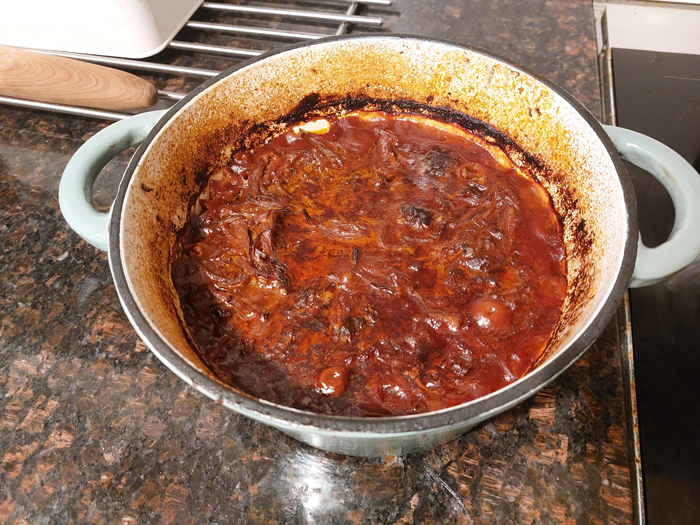
Washing up
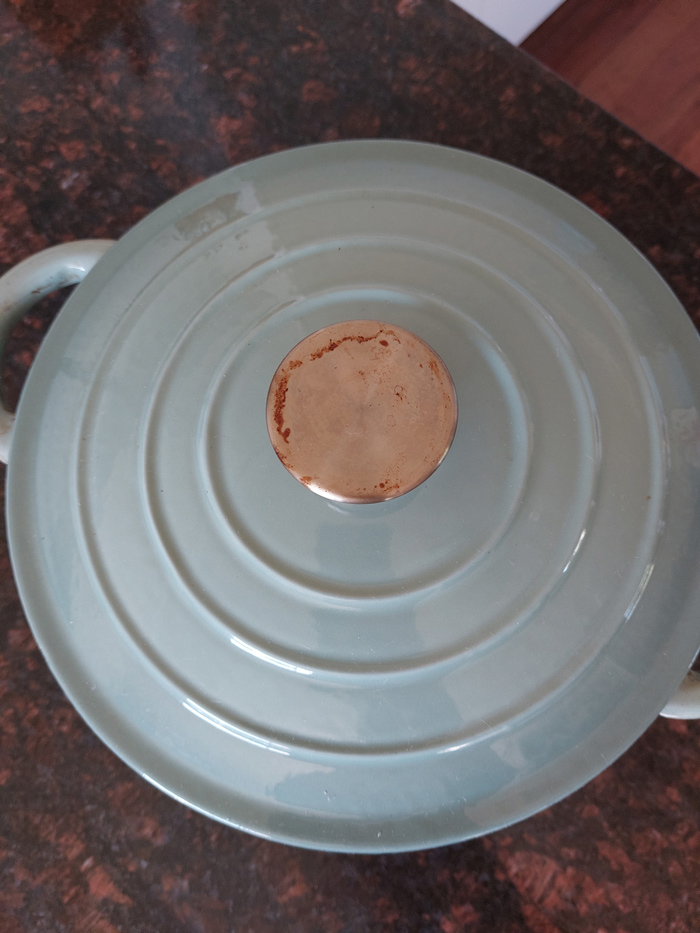
In my household, whoever cooks doesn’t do the washing up and I wasn’t about to break this sacred rule just for the sake of a review, so I had to quiz my husband to get the information for this section.
When I asked him how he found washing our new Dutch oven, I expected him to complain at least a little (the brisket looked pretty baked-on to me). But he said it was surprisingly easy to clean, and when I inspected the Dutch oven on the drying rack I was impressed to see it looked as good as new.
Granted, this was its first use, and I’m aware it may very well become harder to clean over time, but for now this seems to be yet another area where the Kmart Dutch oven performs perfectly.
I did notice some brown staining had appeared on the metal handle on the lid after its very first use cooking bread, which didn’t make much sense to me (no food had come into contact with the lid), but it also doesn’t bother me much.
The verdict: Is it worth buying a Kmart Dutch oven?
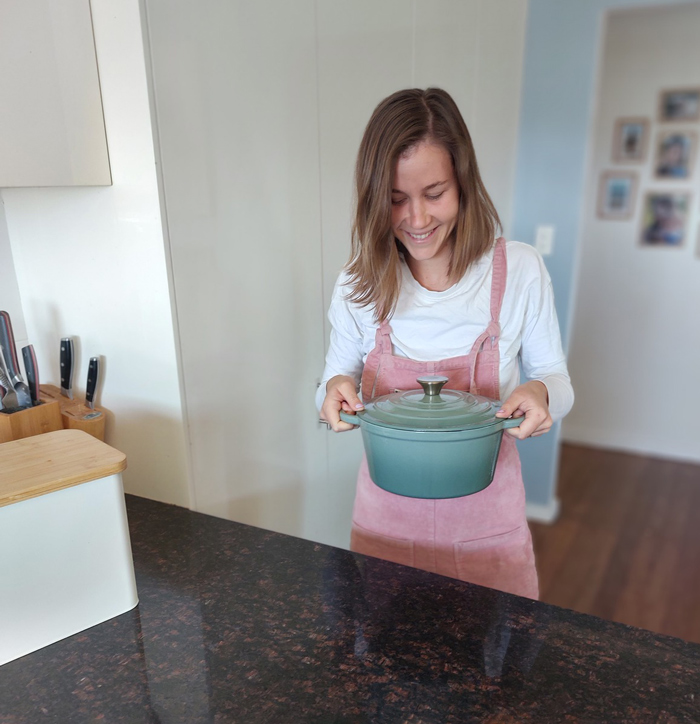
After one week using the Kmart Dutch oven, I really can’t fault its performance. It baked a perfect loaf, did a great job of searing and slow cooking and was easy to wash up. Plus, it looks great.
Considering the cost of other cast-iron Dutch ovens, I just can’t see any other option being worth the money when this $30 pot delivers on every metric that matters to me.
I am usually wary of buying uber-cheap products that are likely to have a short life and add to landfill, and the fact that some high-quality cast-iron Dutch ovens have a lifetime warranty is certainly compelling. But, overall, my instincts tell me that even if this pot doesn’t last a lifetime, it will probably do a good job for the foreseeable future.
I’ll definitely be recommending it to others, especially as a low-risk option for a first foray into cast-iron cooking.
The Kmart Dutch two years on
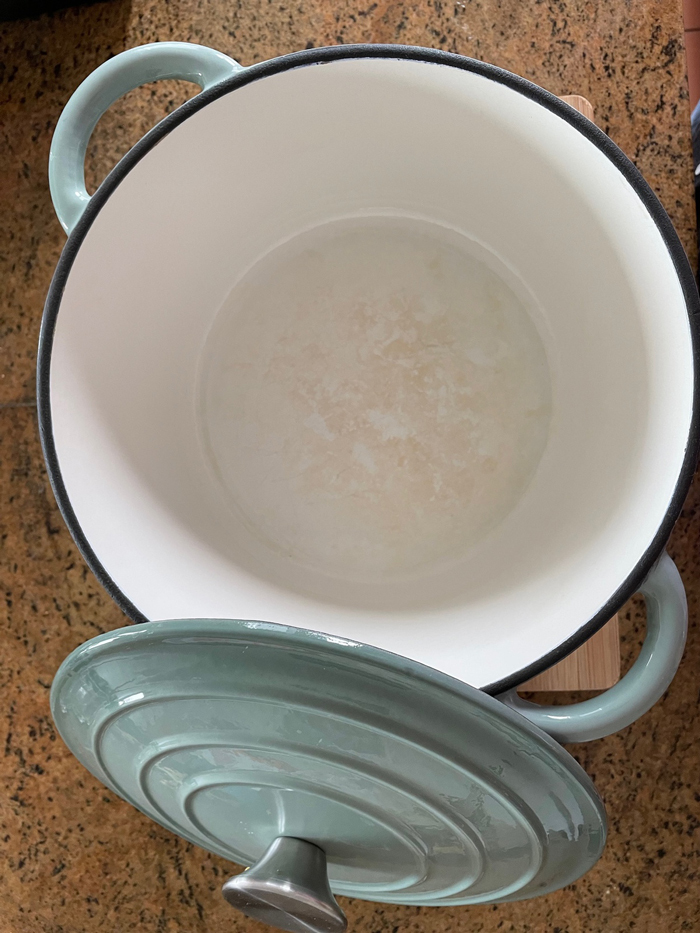
When I discovered that my colleague here at CHOICE, Tracy, had bought the exact same Kmart Dutch oven a couple of years ago, I was keen to find out how it was holding up.
“It’s very practical and I use it fairly regularly for a lot of meals like Bolognaise, red and green curries, and soups,” says Tracy.
“I have never put it in the oven to bake or slow-cook anything – I mostly use it just as a saucepan with a lid because it’s nicer to use than a stainless steel pot. It’s non-stick, it has a more even heat so you have a bit more control and it keeps things warm for longer, which is handy if you want to go back for seconds or somebody in the family comes home late for dinner.”
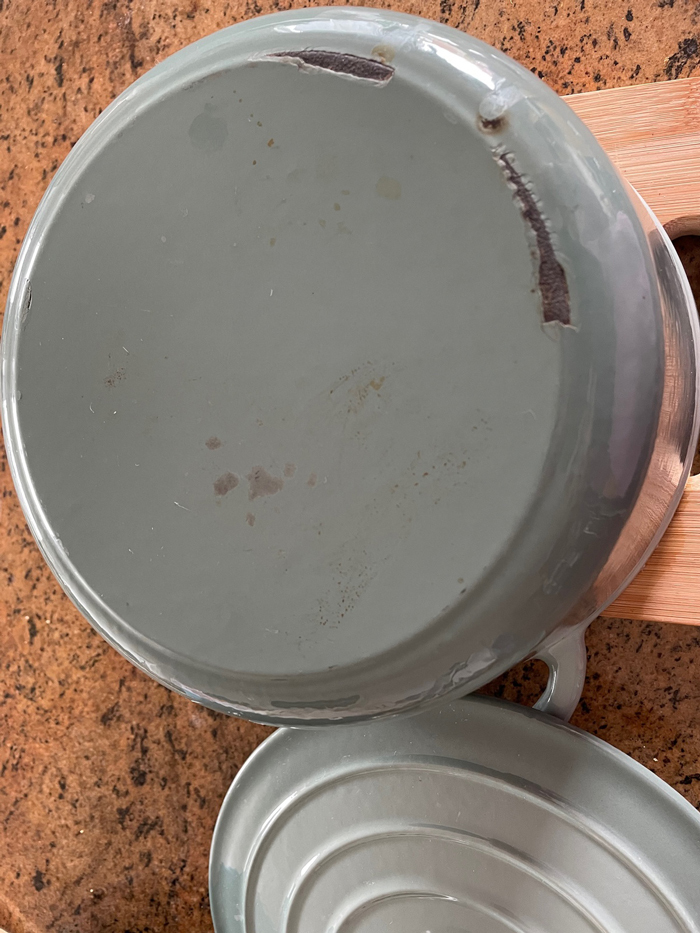
So how about wear and tear?
Tracy says the enamel on the inside of her Dutch oven has stained a little, but like me, that’s not something that bothers her.
“I would expect the same with a high-end product,” she says.
More concerning, says Tracy, is that the enamel on the exterior has started to flake and chip off, even though she washes it by hand.
“Every time I use it, a little more enamel chips off – it started with the bottom, but now the handles are chipping too,” she says.
“And I am only using it on a ceramic-top electric stove. It’s not like a gas stove where it might be knocked around on the hob,” adds Tracy. “If it starts chipping on the inside I’ll have to get rid of it. I hope there’s still a few more years in it.”
Because the enamel has chipped after only a couple of years of moderate use, Tracy says she probably won’t replace it, even if it did only cost $30.
I suspect we’ll have the Le Creuset a lot longer but will have cooked more meals in the Kmart one
CHOICE senior content editor Tracy Ellis
“We also have a Le Creuset which is bigger, so a bit impractical for everyday use. And I’m a bit scared to use it because it cost so much! I’m not afraid to turn up the heat and sear things in the Kmart one. I suspect we’ll have the Le Creuset a lot longer but will have cooked more meals in the Kmart one.”

